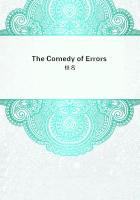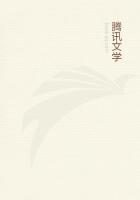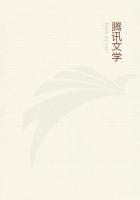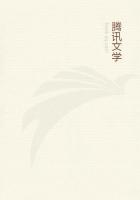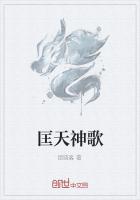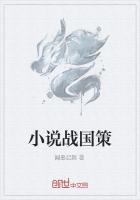The easiest way to bring order into the chaos of desirable books, is, doubtless, to begin historically with manus. Almost every age that has left any literary remains, has bequeathed to us relics which are cherished by collectors. We may leave the clay books of the Chaldeans out of the account. These tomes resemble nothing so much as sticks of chocolate, and, however useful they may be to the student, the clay MSS. of Assurbanipal are not coveted by the collector. He finds his earliest objects of desire in illuminated manus. The art of decorating manus is as old as Egypt;but we need not linger over the beautiful papyri, which are silent books to all but a few Egyptologists. Greece, out of all her tomes, has left us but a few ill-written papyri. Roman and early Byzantine art are represented by a "Virgil," and fragments of an "Iliad"; the drawings in the latter have been reproduced in a splendid volume (Milan 1819), and shew Greek art passing into barbarism. The illumination of MSS. was a favourite art in the later empire, and is said to have been practised by Boethius. The iconoclasts of the Eastern empire destroyed the books which contained representations of saints and of the persons of the Trinity, and the monk Lazarus, a famous artist, was cruelly tortured for his skill in illuminating sacred works. The art was decaying in Western Europe when Charlemagne sought for painters of MSS. in England and Ireland, where the monks, in their monasteries, had developed a style with original qualities. The library of Corpus Christi at Cambridge, contains some of the earliest and most beautiful of extant English MSS. These parchments, stained purple or violet, and inscribed with characters of gold; are too often beyond the reach of the ******* for whom we write. The MSS. which he can hope to acquire are neither very early nor very sumptuous, and, as a rule, MSS. of secular books are apt to be out of his reach.
Yet a collection of MSS. has this great advantage over a collection of printed books, that every item in it is absolutely unique, no two MSS. being ever really the same. This circumstance alone would entitle a good collection of MSS. to very high consideration on the part of book-collectors. But, in addition to the great expense of such a collection, there is another and even more serious drawback.
It is sometimes impossible, and is often extremely difficult, to tell whether a MS. is perfect or not.
This difficulty can only be got over by an amount of learning on the part of the collector to which, unfortunately, he is too often a stranger. On the other hand, the advantages of collecting MSS. are sometimes very great.
In addition to the pleasure--a pleasure at once literary and artistic--which the study of illuminated MSS. affords, there is the certainty that, as years go on, the value of such a collection increases in a proportion altogether marvellous.
I will take two examples to prove this point. Some years ago an eminent collector gave the price of 30 pounds for a small French book of Hours, painted in grisaille. It was in a country town that he met with this treasure, for a treasure he considered the book, in spite of its being of the very latest school of illumination. When his collection was dispersed a few years ago this one book fetched 260 pounds.
In the celebrated Perkins sale, in 1873, a magnificent early MS., part of which was written in gold on a purple ground, and which was dated in the catalogue "ninth or tenth century," but was in reality of the end of the tenth or beginning of the eleventh, was sold for 565 pounds to a dealer. It found its way into Mr. Bragge's collection, at what price I do not know, and was resold, three years later, for 780 pounds.
Any person desirous of ****** a collection of illuminated MSS., should study seriously for some time at the British Museum, or some such place, until he is thoroughly acquainted (1) with the styles of writing in use in the Middle Ages, so that he can at a glance make a fairly accurate estimate of the age of the book submitted to him;and (2) with the proper means of collating the several kinds of service-books, which, in nine cases out of ten, were those chosen for illumination.
A knowledge of the styles of writing can be acquired at second hand in a book lately published by Mr. Charles Trice Martin, F.S.A., being a new edition of "Astle's Progress of Writing." Still better, of course, is the actual inspection and comparison of books to which a date can be with some degree of certainty assigned.
It is very common for the age of a book to be misstated in the catalogues of sales, for the ****** reason that the older the writing, the plainer, in all probability, it is. Let the student compare writing of the twelfth century with that of the sixteenth, and he will be able to judge at once of the truth of this assertion.
I had once the good fortune to "pick up" a small Testament of the early part of the twelfth century, if not older, which was catalogued as belonging to the fifteenth, a date which would have made it of very moderate value.
With regard to the second point, the collation of MSS., I fear there is no royal road to knowing whether a book is perfect or imperfect.
In some cases the catchwords remain at the foot of the pages. It is then of course easy to see if a page is lost, but where no such clue is given the student's only chance is to be fully acquainted with what a book OUGHT to contain. He can only do this when he has a knowledge of the different kinds of service-books which were in use, and of their most usual contents.

